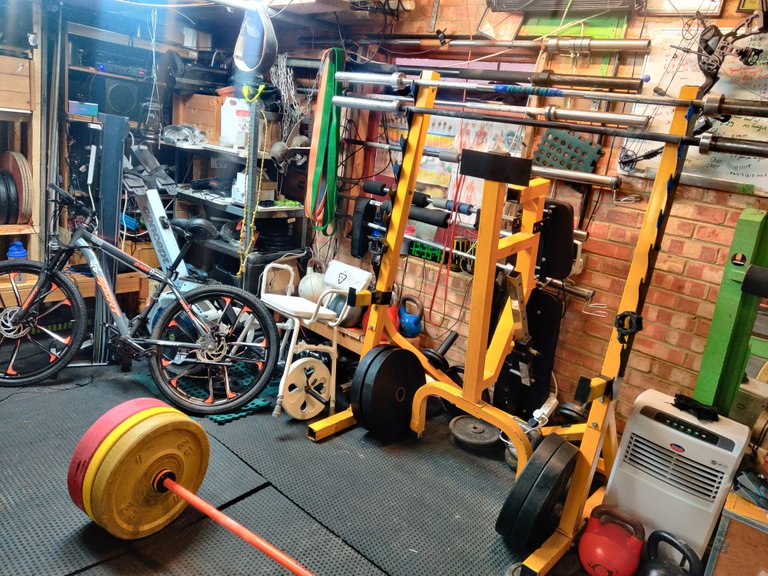Balance in the Squat Position
Balance in the Squat Position
In most cases the accomplished lifter is very comfortable in the squat position. In the snatch, most lifters find that the best position for them has the bar in line with the back of the head and with the rearmost portion of the hips slightly behind the bar. The arms are straight and the lifter is pushing up on the arms and thinking of stretching the bar as well. In the clean the bar rests on the tops of the shoulders and the elbows point straight forward, with the upper arms held parallel to the floor. Regardless of how comfortable the lifter is in the bottom position, it is important to stand up from that position as quickly as possible. The lifter should remain in the bottom position of the squat only long enough to halt the bar's downward progress. If an adjustment needs to be made, it is better to make it in a partially recovered position (e.g., the lifter can step forward to move his or her base of support in that direction when the bar has traveled in front of that base and as the lifter sits in the bottom position). Driving up against the bar also gives the lifter more control over the motion of the bar than when the lifter merely sits passively in the bottom position.
A position with the feet wider than the hips provides for greater stability and generally makes it easier for the lifter to keep the torso upright and the lower back slightly arched than does a position with the feet narrower than hip width. The feet are generally best kept at an angle of 45 to 75 relative to one another (although some lifters find that a smaller of greater angle is more appropriate for them). The more upright the shins, the smaller the pressure on the knee joints, but the more difficult it is for the lifter to keep the torso upright and the lower back arched. A higher heel in the weightlifting shoe enables the lifter to assume a more upright position and to keep the lower back more arched than does a lower heel, but it tends to place more strain on the knees as the knees are pushed forward of the toes in the deep squat position. A higher heel also changes the lifter's balance to a forward direction during other phases of the pull and jerk. In addition, it shifts the lifter's knees forward to a greater extent at the start of the pull, which means that the lifter will have to move the knees further to remove them from the path of the bar as it rises upward. Therefore, it is an advantage if the lifter can achieve the flexibility necessary to in order to assume a more correct low position and lower his or her heels.
Trade-free fitness at www.myworkoutarena.com

Hi @rmsbodybuilding,
Thank you for participating in the #teamuk curated tag. We have upvoted your quality content.
For more information visit our discord https://discord.gg/8CVx2Am